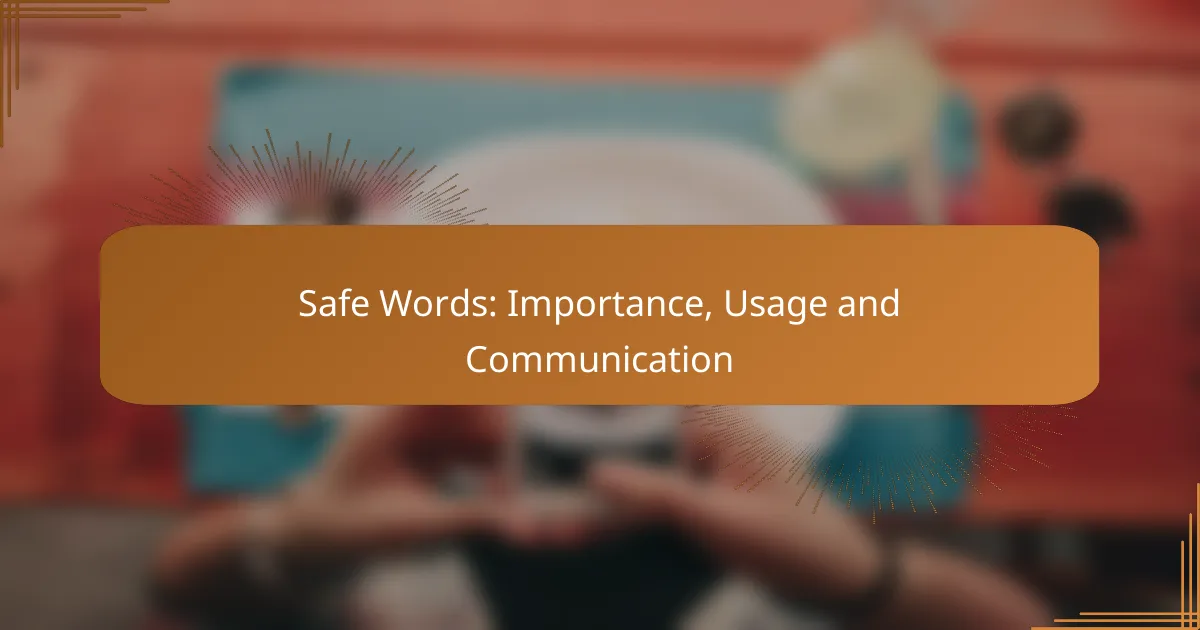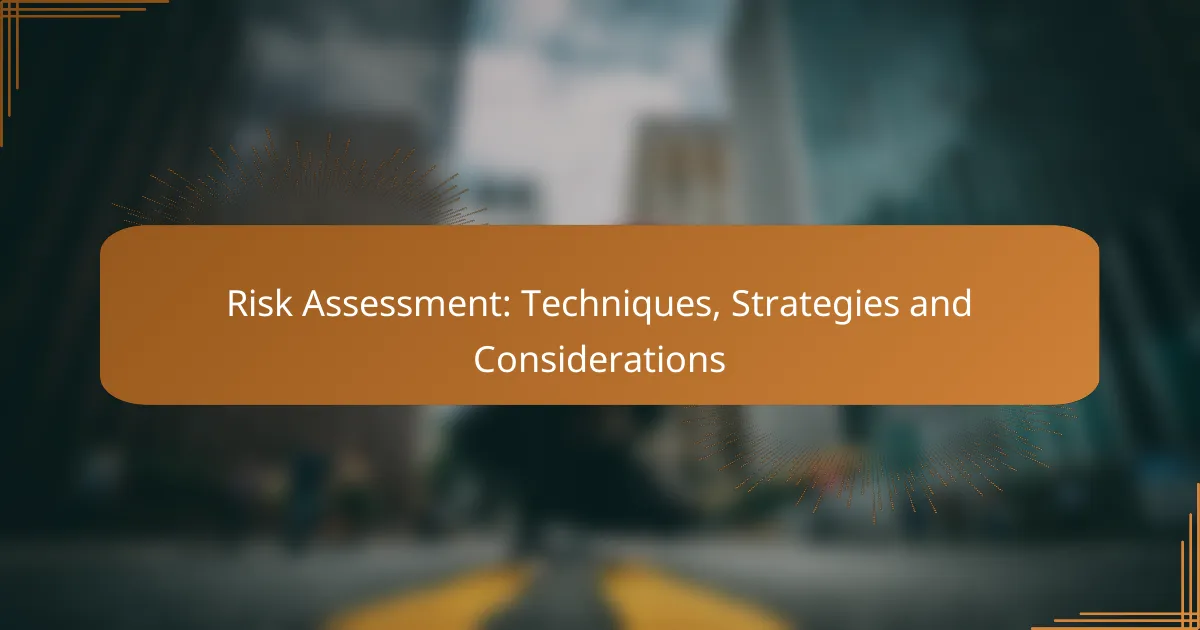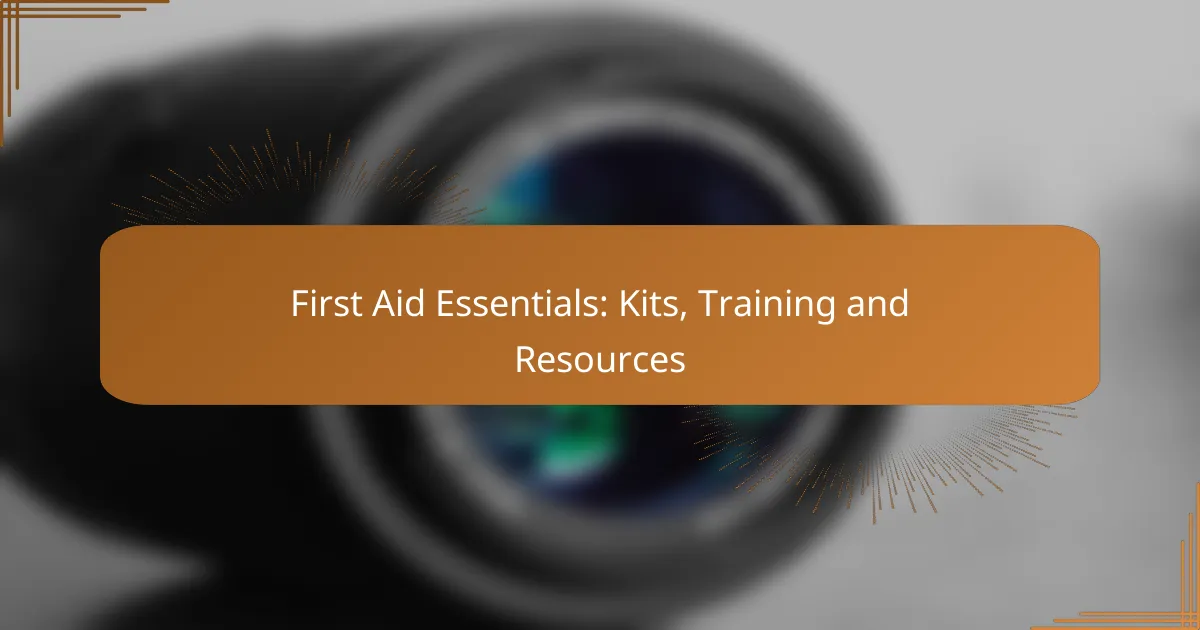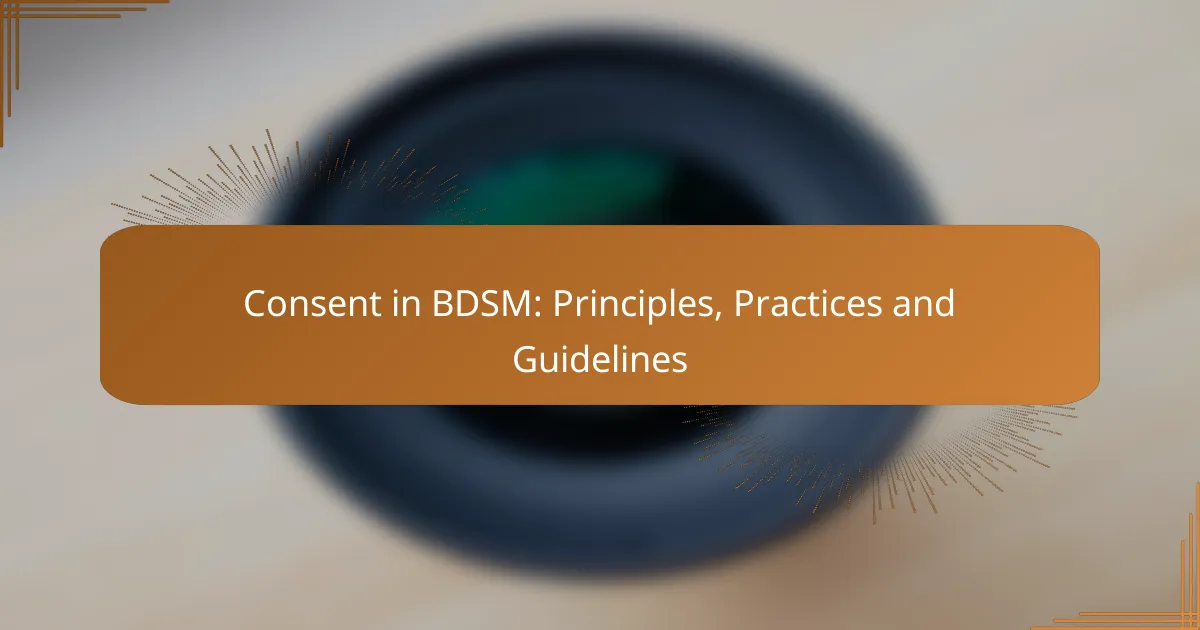Safe words play a vital role in fostering clear communication and ensuring the safety and comfort of all participants in intimate or high-intensity situations. By establishing a specific term that signals the need to pause or stop an activity, individuals can express their boundaries without fear of misunderstanding. Choosing easily remembered words and agreeing on their meanings beforehand enhances trust and respect among all parties involved.
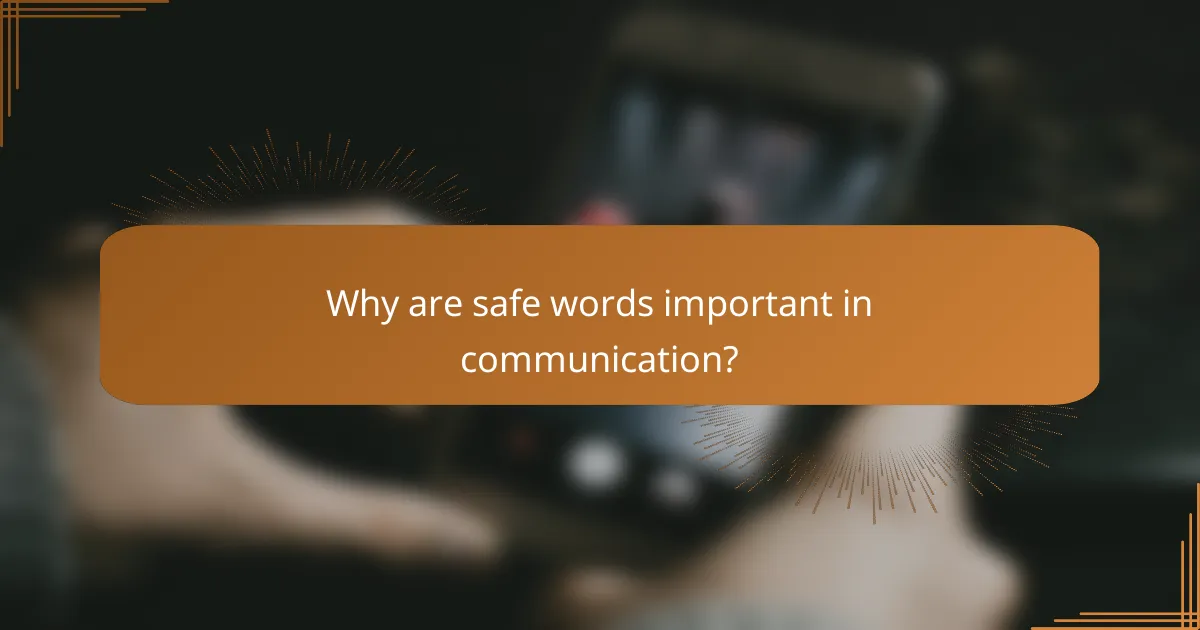
Why are safe words important in communication?
Safe words are crucial in communication as they provide a clear and agreed-upon signal to pause or stop an activity, ensuring that all parties feel secure and respected. They foster an environment where individuals can express their boundaries without fear of misunderstanding or negative repercussions.
Enhances trust and safety
Using safe words significantly enhances trust between individuals by establishing a framework for safety. When everyone knows they can use a safe word to halt an activity, it creates a sense of security that encourages exploration and openness.
For example, in intimate settings, knowing that a partner can communicate discomfort without hesitation fosters a deeper connection and mutual respect. This trust is foundational for healthy relationships.
Prevents misunderstandings
Safe words help prevent misunderstandings by providing a straightforward method for expressing discomfort or the need to stop. This clarity reduces the likelihood of miscommunication, which can lead to negative experiences.
For instance, if someone feels overwhelmed but struggles to articulate it verbally, a pre-agreed safe word allows them to communicate their feelings effectively. This practice ensures that all parties are on the same page regarding boundaries.
Facilitates open dialogue
Safe words facilitate open dialogue by encouraging conversations about limits and preferences. When individuals know they can safely express their needs, it leads to more honest discussions about desires and boundaries.
Regularly checking in with partners about safe words can promote ongoing communication, making it easier to navigate changes in comfort levels over time. This proactive approach strengthens relationships.
Supports consent in relationships
Safe words are a vital component of consent, reinforcing that all parties have the right to withdraw consent at any time. They serve as a reminder that consent is an ongoing process rather than a one-time agreement.
In practice, establishing and respecting safe words ensures that everyone involved feels empowered to voice their comfort levels. This practice not only upholds individual autonomy but also enhances the overall dynamic of the relationship.

How to effectively use safe words?
To effectively use safe words, choose terms that are easily understood and memorable, ensuring clear communication during activities. Establishing these words before engaging in any intimate or potentially risky situations is crucial for safety and comfort.
Choose clear and distinct words
Selecting safe words that are clear and distinct is essential for effective communication. Words should be easy to remember and pronounce, even in heightened emotional states. For example, using simple terms like “red” for stop and “yellow” for pause can help avoid confusion.
Avoid common words that might be used in regular conversation, as this can lead to misunderstandings. Instead, opt for unique phrases or even colors that stand out in the context of your activities.
Establish usage before activities
Before engaging in any activities, discuss and agree upon the safe words with all parties involved. This ensures everyone understands their significance and how they should be used. Make it a point to clarify what actions will trigger the use of these words.
Consider creating a list of safe words and their meanings, which can serve as a reference during your activities. This proactive approach helps reinforce the importance of these words and builds trust among participants.
Practice active listening
Active listening is vital when using safe words, as it ensures that all parties are attentive and responsive to each other’s needs. When a safe word is spoken, it should be treated with immediate seriousness, prompting a pause or reassessment of the situation.
Encourage open communication and check in with each other regularly. This can help create a safe environment where everyone feels comfortable expressing their feelings and concerns, ultimately enhancing the experience for all involved.

What are common examples of safe words?
Common examples of safe words include “red,” “yellow,” and “green.” These words help establish clear communication during intimate or high-intensity situations, allowing participants to express their comfort levels effectively.
Red for stop
The safe word “red” is universally recognized as a signal to stop all activities immediately. When someone uses this word, it indicates that they are feeling overwhelmed, uncomfortable, or unsafe, and all actions should cease without question.
Using “red” effectively requires both parties to understand its significance. It’s essential to respect this word and ensure that all activities halt instantly to prioritize safety and consent.
Yellow for slow down
When “yellow” is used, it’s crucial to check in with the other person to clarify feelings and ensure that both parties are comfortable moving forward. This can involve discussing boundaries or taking a moment to breathe.
Green for go
The safe word “green” indicates that everything is proceeding well and that the participant is comfortable continuing. It reassures the other person that they can maintain the current level of activity without concern.
Using “green” can enhance communication and trust between partners. Regularly checking in and affirming comfort levels with this word can foster a more enjoyable and consensual experience.

How can safe words improve relationships?
Safe words can significantly enhance relationships by fostering open communication and mutual understanding. They provide a clear mechanism for partners to express discomfort or the need for a pause, ultimately leading to a more trusting and respectful dynamic.
Encourages vulnerability
Using safe words encourages individuals to express their feelings and limits without fear of judgment. This openness allows partners to share their vulnerabilities, creating a space where both can feel secure in revealing their true selves. For example, knowing that a partner can safely communicate discomfort can lead to deeper emotional exchanges.
When partners feel safe to be vulnerable, it can strengthen the overall bond. This practice not only enhances trust but also promotes a culture of honesty, which is essential for a healthy relationship.
Builds emotional intimacy
Safe words contribute to emotional intimacy by facilitating honest conversations about desires and boundaries. When partners discuss their safe words, they engage in meaningful dialogue about their needs and limits, which can deepen their connection. This process often leads to a better understanding of each other’s emotional landscapes.
Regularly checking in about the use of safe words can reinforce this intimacy. It shows that both partners value each other’s comfort and well-being, which can strengthen their emotional ties over time.
Strengthens boundaries
Establishing safe words helps clarify and reinforce personal boundaries within a relationship. By agreeing on specific terms, partners can navigate their interactions with a clear understanding of what is acceptable and what is not. This clarity can prevent misunderstandings and reduce the likelihood of crossing boundaries.
To effectively strengthen boundaries, partners should regularly revisit and discuss their safe words. This practice ensures that both individuals feel heard and respected, and it allows for adjustments as their relationship evolves. Remember to approach these discussions with openness and a willingness to adapt to each other’s needs.
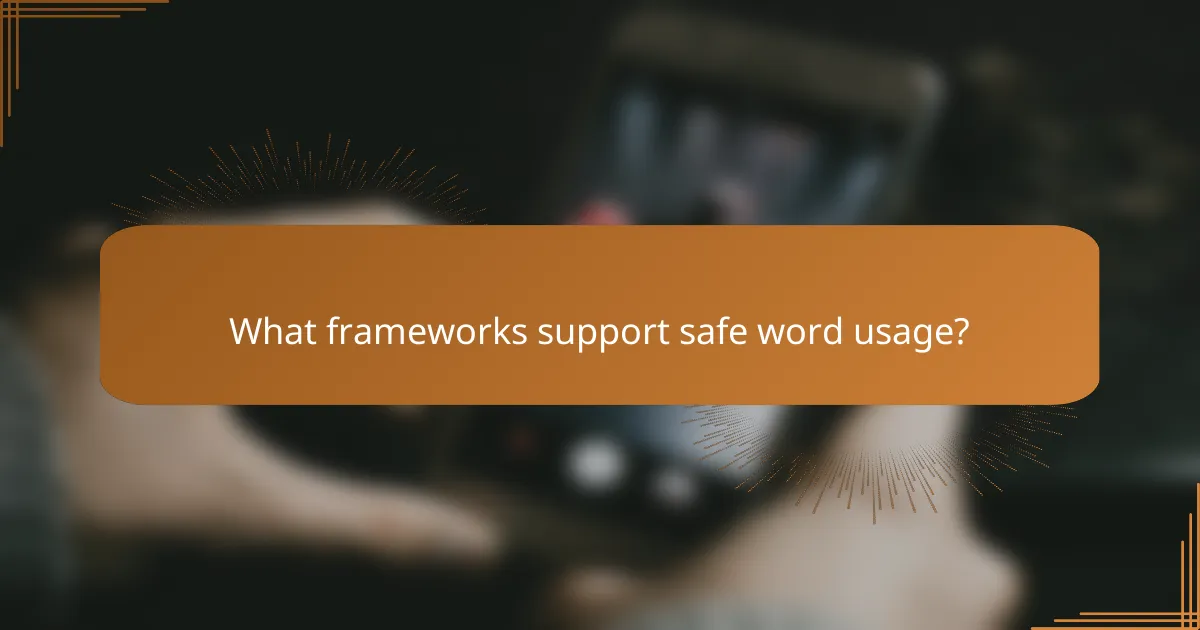
What frameworks support safe word usage?
Safe word usage is supported by various frameworks that facilitate clear communication and consent in intimate or high-stakes situations. These frameworks help establish boundaries and ensure that all parties feel secure and respected during interactions.
Communication models
Effective communication models emphasize the importance of clarity and openness when discussing safe words. Models such as Nonviolent Communication (NVC) focus on expressing needs and feelings without judgment, which can enhance understanding and responsiveness among participants.
Another model, the 4Rs (Recognize, Reflect, Respond, and Reassess), encourages ongoing dialogue about boundaries and safe words. This iterative process allows individuals to adapt their communication as situations evolve, ensuring that everyone remains comfortable and aware of each other’s limits.
Consent frameworks
Consent frameworks provide structured approaches to ensure that all parties agree to the terms of engagement, including the use of safe words. The enthusiastic consent model stresses that consent should be clear, informed, and ongoing, allowing participants to withdraw consent at any time.
Additionally, frameworks like the Yes Means Yes approach advocate for affirmative agreement rather than the absence of a “no.” This proactive stance encourages individuals to discuss their safe words openly and reinforces the importance of mutual respect in all interactions.
